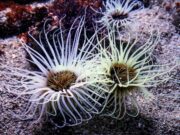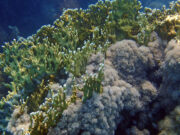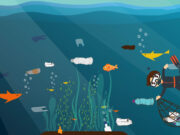sealife
Home sealife
World’s largest container carrier MSC re-routes to keep away from endangered blue whales off the coast of Sri Lanka
MSC Mediterranean Shipping Company has taken a major step to help protect blue whales and...
Mother turtles find their way back to nesting beaches by looking for unique magnetic signatures along the coast, according to a new study published in Current Biology.
Loggerhead turtles, for example, leave the beach where...
"Nearly 50% of the scientific publications for the fishes studied only concerned a subset of 1% of the species"
The most threatened reef fishes are the most overlooked by scientists and the general public. That...
A large mouth, eyes set high on the head and its tufted tentacles above each eye give the Tompot Blenny (Parablennius gattorugine) a comical appearance. A much smaller fringed tentacle is positioned on the nostril beneath each eye.
How many manta rays are in the Seychelles? Where are they going? When are they there? All is revealed.
The seasons are beginning to change around the world in May and bring favourable dive conditions for some of the best destinations in the world.
Australia
It is a great month...
The Underwater Photography Guide today released the results of the world's largest underwater photo contest. The lifting of travel restrictions led to an unprecedented calibre of photos, including the best in show image featuring another teachable moment...
Colourful Christmas tree worms are captivating during any dive, adding a touch of festive magic to coral reefs around the world. A wonderful miniature water woodland.
The rare giant mussel, Pinna nobilis, is found only in the Mediterranean Sea. It is one of the largest bivalves in the world, growing to 120 cm long. The mussels can live for as long as 20 years. It...
The massive Conger Eel grows to almost 3 m (10 ft) long, the females often being bigger than the males. At night they hunt fish and crustaceans like crabs and lobsters. In spite of this divers often see crustaceans sharing a hole with a conger. Congers breed only once in their lives, at between 5 and 15 years of age. They migrate to deep water to spawn – some sources say as deep as 4000 m.





























